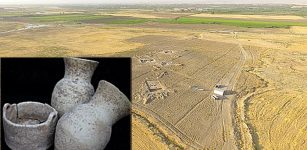Camas Plant Stewardship In The Pacific Northwest Dates Back More Than 3,500 Years
Jan Bartek - AncientPages.com - An Oregon State University study has uncovered evidence that Indigenous groups in the Pacific Northwest intentionally harvested edible camas bulbs at optimal stages of the plant's maturation as far back as 3,500 years ago.
This discovery contributes to the expanding research on Traditional Ecological Knowledge and practices, highlighting the meticulous care and specificity with which Indigenous communities have stewarded and cultivated natural resources for thousands of years. Camas is considered an ecological and cultural keystone species, meaning it is a plant on which many other organisms depend and holds significant importance within various cultural practices.
Camas is a striking blue flower that thrives across the Pacific Northwest region. In Indigenous calendars, this plant holds a significant place, with its growth stages serving as markers for the changing seasons. The emergence of camas is often celebrated in traditional First Food ceremonies, where tribal communities welcome the arrival of spring by honoring the first salmon run or the first edible roots after a long winter. This deep-rooted connection to camas highlights its cultural importance as a natural indicator of the cyclical rhythms of nature.
"If you think about salmon as being a charismatic species that people are very familiar with, camas is kind of the plant equivalent," said Molly Carney, an assistant professor of anthropology in OSU's College of Liberal Arts and lead author on the study. "It is one of those species that really holds up greater ecosystems, a fundamental species which everything is related to."
Camas bulbs, a traditional food source for Indigenous peoples, require a unique preparation process to render them edible. The bulbs must undergo a two- to three-day baking process, after which they develop a flavor reminiscent of sweet potatoes. Traditionally, this baking was carried out in underground ovens heated by rocks.
Archaeological evidence examined by researchers like Carney reveals the remains of these large pit ovens used for cooking camas bulbs. Once cooked, Indigenous peoples employed various methods to process and store the camas for extended periods, sometimes several months. Even the famous explorers Lewis and Clark documented consuming camas provided by members of the Nez Perce tribe.
In a recent study, Carney analyzed camas bulbs from the Willamette Valley in Oregon, dating back 8,000 years, to determine the stage of their life cycle at which they were harvested. Like tree rings indicate a tree's age, counting the interior leaf scales of a camas bulb allows researchers to estimate its age at harvest. Camas typically reach a harvestable size within three to five years, depending on soil conditions.
The archaeological findings at the Long Tom River site near Veneta, Oregon, have shed light on the ancient practice of camas bulb harvesting. While camas baking ovens dating back 4,400 years have been discovered, evidence suggests that the bulbs were harvested indiscriminately for several thousand years. However, around 3,500 years ago, a more selective approach emerged, with bulbs harvested when the plants were four or five years old and had reached sexual maturity.
Interestingly, this shift in harvesting practices coincided with broader climatic changes in the region and the increased occurrence of low-magnitude fires in the landscape. Further evidence from lake-core samples collected by Central Washington University researcher Megan Walsh supports the theory that controlled burns were intentionally used to create optimal conditions for camas and other plants, starting between 3,000 and 4,000 years ago.
These findings provide valuable insights into ancient communities' sophisticated land management practices. They demonstrate their deep understanding of the local ecosystem and their ability to manipulate it for sustainable resource utilization.
Camas flowers. Credit: Oregon State University
Based on her research, Carney says it's clear that Native communities at the time were not selectively harvesting for the biggest possible bulbs but rather stewarding camas to be sustainable over time.
"They were trying to maintain the age structure of these camas populations within a pretty narrow window," she said. "When I had the opportunity to harvest alongside tribal communities, as they harvest, they replant the smaller bulbs as they go. They're really sowing for future harvest, and that's what I think was happening here."
See also: More Archaeology News
The transition from indiscriminate harvesting to selective stewardship among tribal communities in the Pacific Northwest appears to have occurred simultaneously, according to Carney. For this practice to be successful, the researchers note that it would have required community-wide consensus and cooperation to leave immature camas bulbs in the ground until the optimal harvest time and conduct the necessary cultural burning to maintain healthy growing spaces.
"We have these records showing that people were taking active roles in creating landscapes that fit their needs, and that they've been doing so for 3,500 years at least, based on these two proxies of camas and fire," Carney said. "That provides a powerful claim for restoring these practices."
The study was published in The Holocene
Written by Jan Bartek - AncientPages.com Staff Writer






















